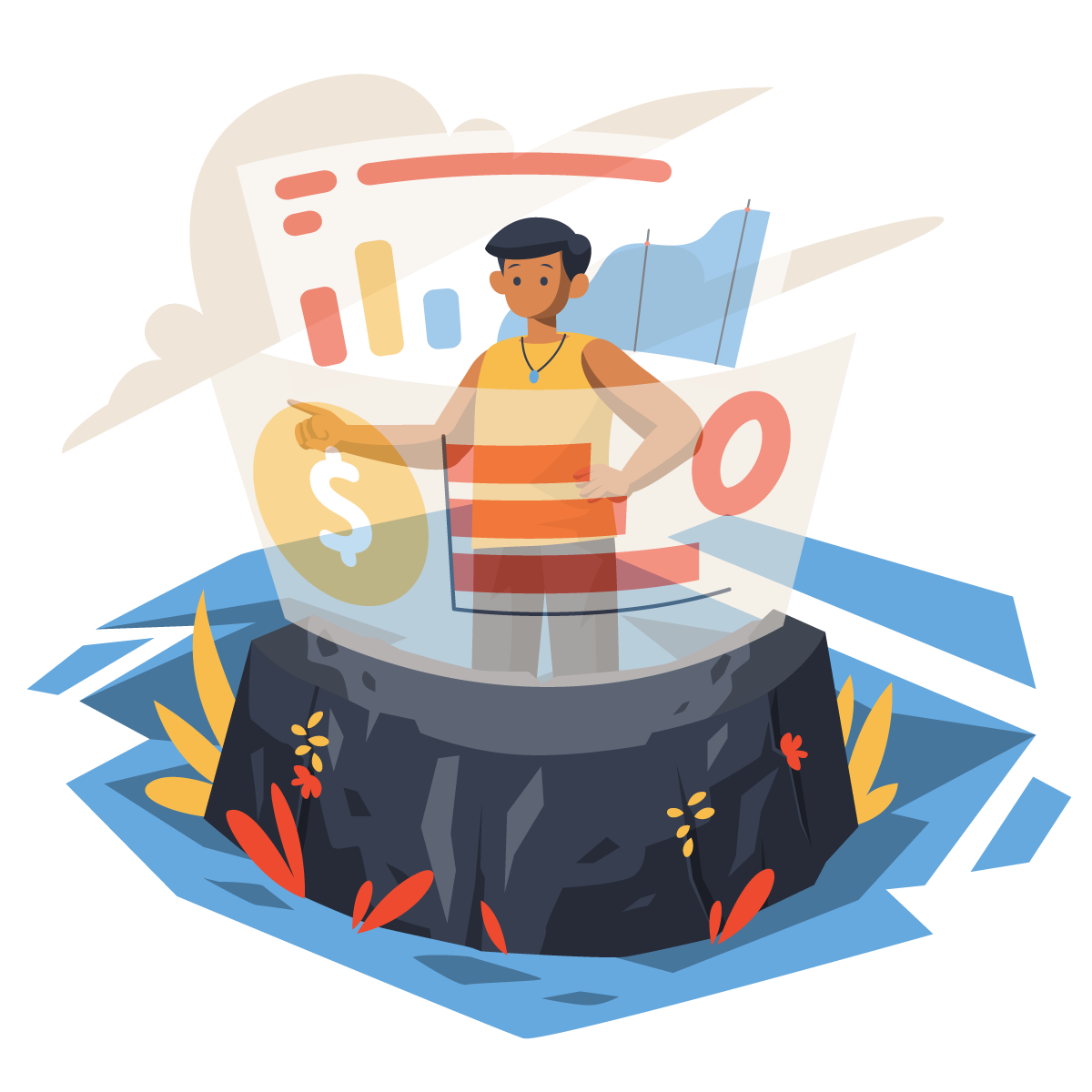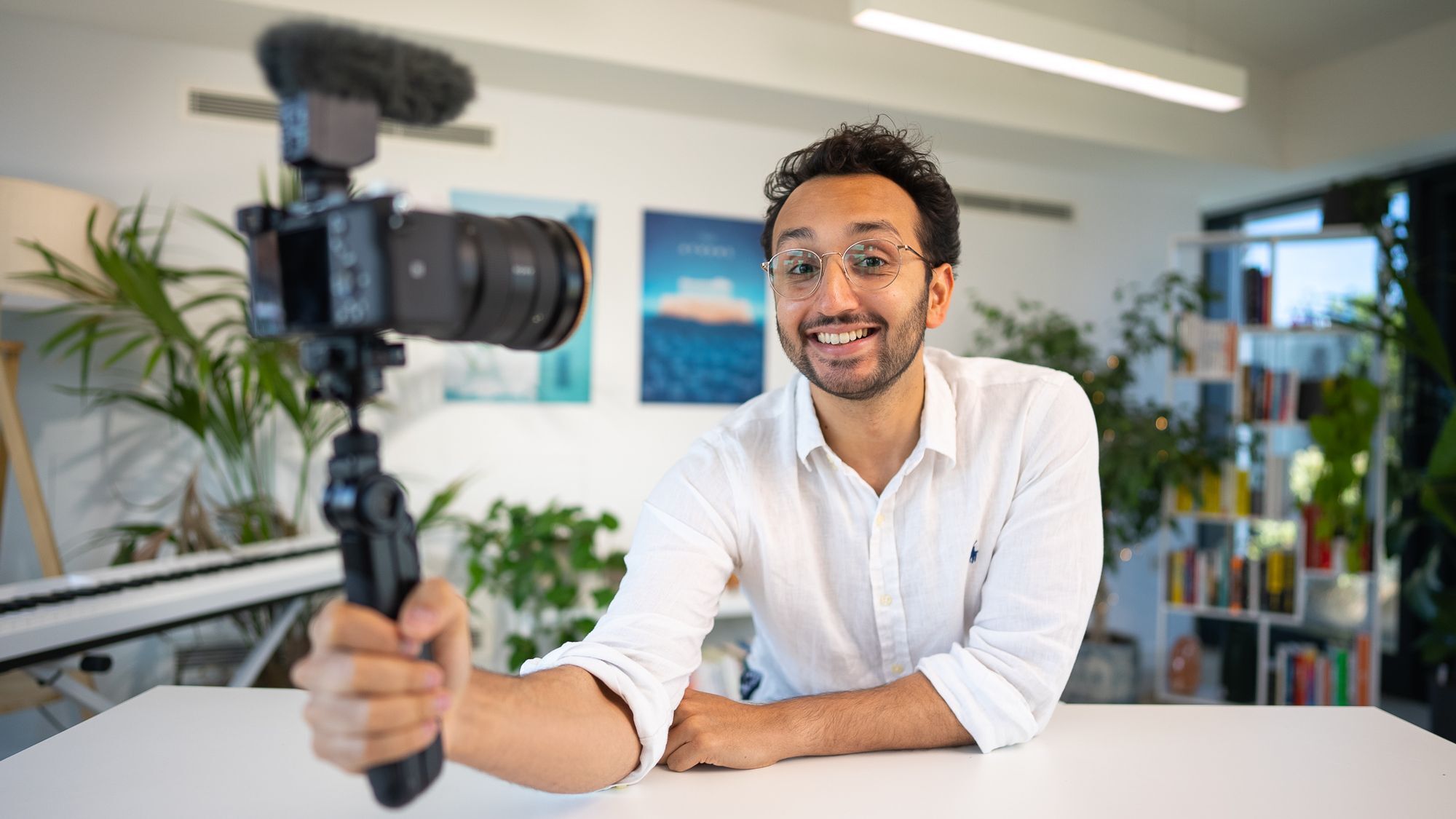Table of contents
There are lots of ways to make money online: dropshipping, freelancing, tutoring, selling your old Yu-Gi-Oh! cards on Ebay…
But the most enriching way to make money online might be becoming a creator.
You’ll develop useful skills, build a connection with your audience, and eventually make some money. YouTube, podcasting, writing, Twitch streaming, Instagram, anything goes. And pretty much anyone can do it from their bedroom.
I started my journey as a YouTuber back in 2017, and since then I’ve built a multi-million business that employs 15+ people. All on the back of me talking to a camera about stuff I found interesting.
So, here’s my roadmap for how to make money online as a creator in 2022. Especially as a writer or YouTuber – he two things I know most about. But most of this advice will also apply to photographers, podcasters, and anyone else wondering how to make money online as a creator in 2022.
We’ll talk about getting started, improving at your craft, finding your unfair advantages, growing your audience, and finally how to monetise that audience.
This article should be useful if you:
- Are just starting out
- Want to get better at your craft
- Want to grow your audience
- Want to monetise your existing audience.
A lot of the advice in this article is also included in this video I made with David Perell.
David and I both started creating in 2017, and have since built multi-million dollar businesses, me as a YouTuber, him as an ‘Online Writing Guy’. Check out the video for our in-depth discussion.
🌅 1. Starting Out

Before you can start making money online as a creator, you have to start creating. You need to build up some skills, credibility, and get familiar with your platform.
💳 Starting Costs
One of the main things you want to consider here is “how easy is it for me to get started”.
If you want to be a YouTuber, for example, you can start with a very small setup. You can use your phone camera (if it’s decent), a small tripod, a clip-on lavalier microphone, and a free editing software like iMovie or DaVinci Resolve.
But if you aren’t already familiar with video production, you’ll have to learn a few important skills like basic videography, editing, and speaking to camera. Check out my Skillshare class YouTube for Beginners to learn the basics, and get tech recommendations.
If you want to improve your production quality even more, you’ll have to invest a bit of cash to get a decent camera, a better microphone, and some lighting solutions. Video editing can easily take a couple of hours per video, if you don’t have the cash to invest in a freelance editor.
But it’s way easier to start out as a writer. You can just rock up at a cafe, get out your laptop, write an article, and click ‘publish’ with basically zero costs. So if you’re worried about starting costs, writing is a good place to start.
🖊️ Start Writing
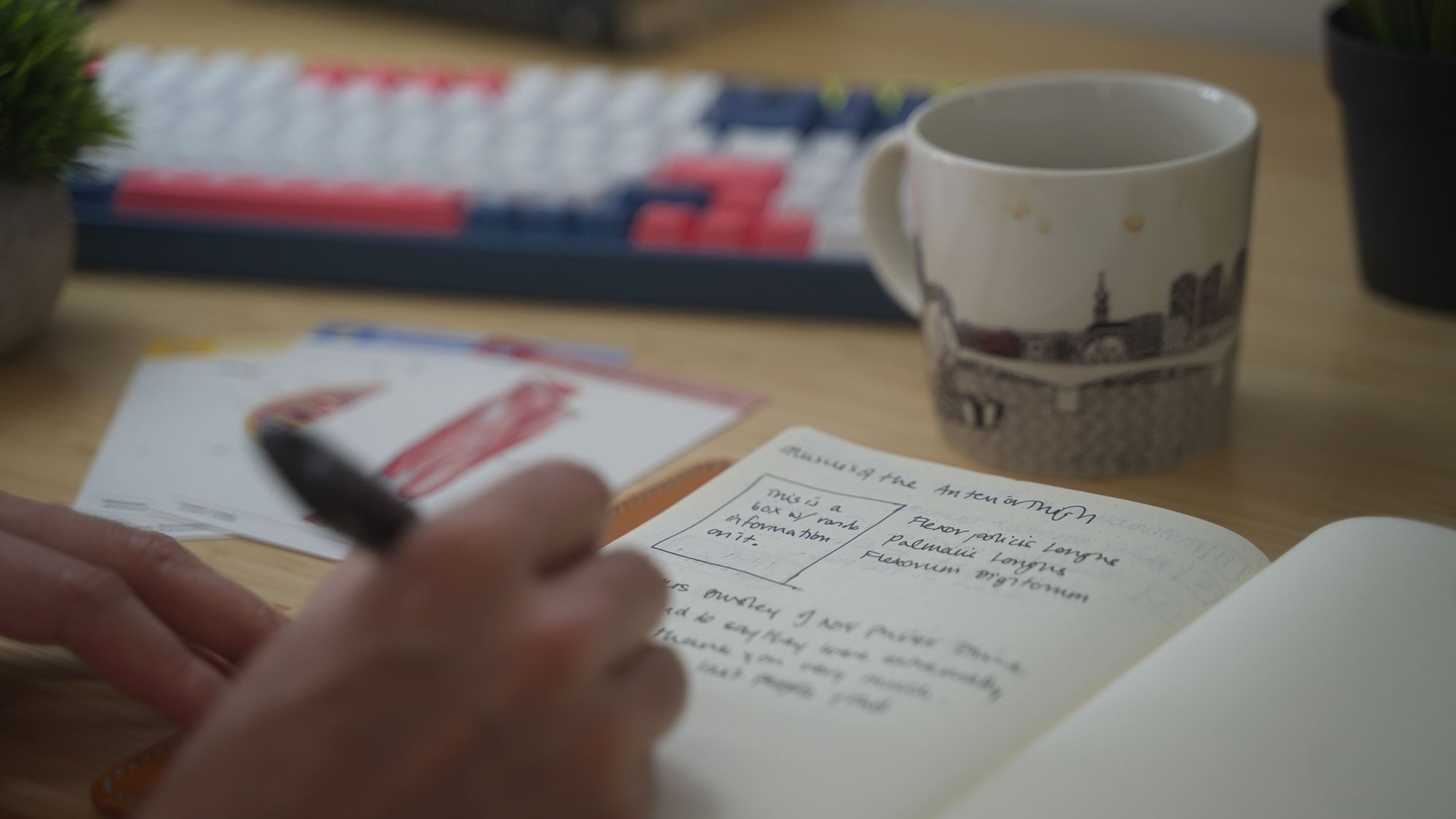
The key to getting started as a writer is consistency. It’s like going to the gym – put aside 30-60 minutes per day to write, and try to stick to that habit.
It’s useful to give yourself a forcing function to publish regularly. That will improve the quality of what you produce (because the stakes are a bit higher), and also hold you accountable, because you’ll have made a commitment to your audience to publish weekly or monthly.
You want to start by publishing at least once a week, to get those reps in. But if you don’t have much time, publish monthly. Write about something you’re either knowledgeable about, or that you’re learning about right now.
Good places to write a newsletter are Substack and Revue, where other people can easily find and subscribe to your writing. Twitter can be game-changing for getting your writing in front of a lot of people quickly. You can test which ideas get the most traction, and then turn them into full-blown essays or newsletter issues.
🎬 Start YouTubing
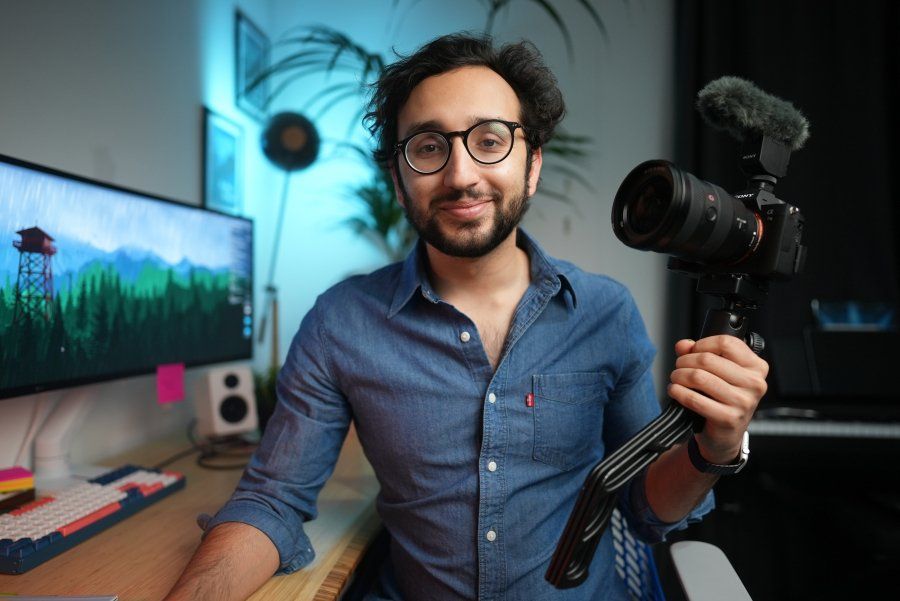
Writing is, funnily enough, also a great way to get started with YouTube. It gets you comfortable with putting your thoughts and ideas online, is much less of a heavy lift, and it’s easy to later repurpose your content for video.
One framework I like to think about for starting YouTube is the Architect vs Archaeologist.
Architects plan everything out before they start building. In YouTube terms that would be knowing exactly what your niche is and planning a series of scripted videos on that topic.
But Archaeologists choose promising areas, and start digging until they find something good. When starting out on YouTube, be an archaeologist. Experiment with whatever you like, until you find a topic that resonates with your audience. At that point, you can start thinking more like an Architect about your long-term strategy.
OK, but once you’ve started, how do you actually get better at your craft?
📈 2. Get Better
🏭 Quantity Leads to Quality
To actually make money online, you need to be fairly good at the thing you’re doing. And by far the best way to reach a good level is to do the thing consistently.
My advice is to always focus on quantity over quality to start with. Want to get better at photography? Take 10,000 photos. Video editing? Edit 100 videos. Write. Make videos. Do it again. Don’t get sidelined by researching the “best note-taking software” or new camera lenses. Just train yourself to produce in large quantities until you can do it without overthinking.
The biggest mistake I see from my YouTube Academy students is perfectionism. Thinking that their next video needs to be perfect, and refusing to publish unless it is. It’s almost always better to get the video out there, because a) it’s usually not as bad as you think, and b) you’ll gather more data on what your audience enjoys.
💞Double-Down on Compliments
Pay attention to positive feedback, like getting lots of comments on a video or Tweet, or perhaps more DMs than usual about your recent Substack newsletter. Those are all signs that your content worked well. Try to examine what it is that you did particularly well or differently, and try to double-down on that in the next few videos or articles.
Be careful not to be completely captured by your audience though. Carry on experimenting and making things that excite you, otherwise you can end up endlessly recycling last year’s ideas.
⭐ Be Open to Inspiration
You should also stay open to inspiration. Be on Twitter, pay attention to what’s trending on YouTube, soak up new ideas from other writers. And try to lead an interesting life. 😉
Every time you come across something that sparks your interest, you’ve found potential material for your next article or video. This echoes Gary Vee’s concept of document, don’t create. Take your audience on a journey with you as you discover new things.
Don’t think you have to produce amazing ideas and content out of thin air every single week.
💪 3. Identify Your Unfair Advantages
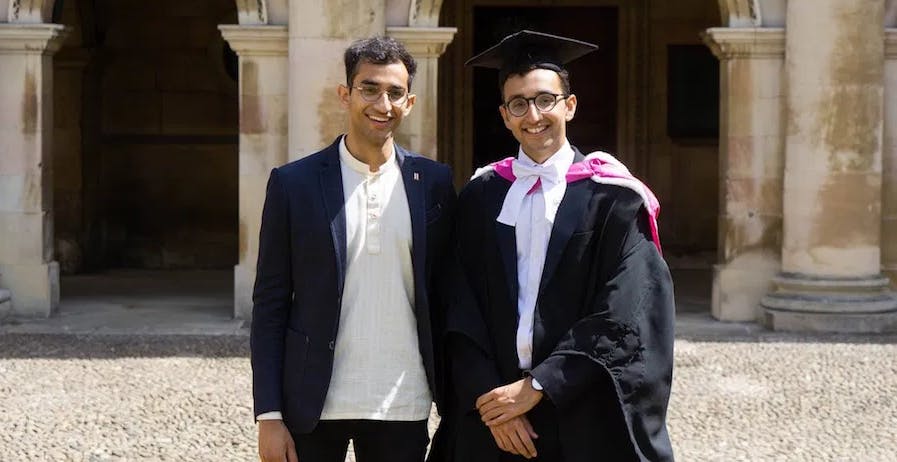
Yes, it’s good to create without overthinking when you’re starting out. But when it comes to increasing your money-making and growth potential, it really helps to think carefully and strategically about your Unfair Advantages.
What advantages do you have over other people? What makes you stand out a little bit? This could be:
- A skill you’ve learned
- Languages you speak
- Niche interests you have
- An interesting combination of skills or interests.
To identify unfair advantages, I like to use the M.I.L.E.S. framework from Ash Ali and Hasan Kubba’s book The Unfair Advantage:
- Money (Do you have access to more money than other people? Can you live rent-free somehow? Do you have interesting ways to raise investment?)
- Intelligence + Insight (Are you ‘smarter’ than a lot of people, however that’s defined? Do you have interesting or unique insights?)
- Location + Luck (Do you live somewhere with a lot of opportunity, like San Francisco? Alternatively, do you live somewhere where there are a lot of undiscovered opportunities? Can you capitalise on any lucky coincidences in your life?)
- Education + Expertise (Do you have a good/prestigious education, or have you been trained/trained yourself in a very useful skill?)
- Status (Will your status open doors for you that would be shut for other people? Eg your parents’ reputation, your previous successes, even your attractiveness.)
My unfair advantages are probably: growing up fairly well-off, Cambridge education, medical student, got into online content and coding from an early age, fast at typing, pretty uninhibited about sharing my life with other people, reading a lot.
None of that would be useful if I wanted to, say, become a guitar teacher. But for making YouTube videos about med school it’s pretty ideal. So that was a really good niche for me when I was starting out.
Do what looks like work to others but feels like play to you. - Naval Ravikant
Ideally you want to create content at this intersection:
- “I’m good at this”
- “I’m interested in this”
- “I know there’s a decent-sized audience for this”.
Then things could really take off.
👥 4. Grow Your Audience

🌊 Ride Waves
There are a lot of ways to go about growing your audience. But one way is ‘riding a wave’. Essentially, write about things that already have a large audience.
‘Waves’ come in three types:
- Ideas - Summarise principles and ideas from a recent book, movie, article, or TV show. On YouTube, I sometimes get ideas from seeing what other videos have done well, deliberately not watching those videos, and creating my own take on the concept. For example, my video How I take notes on my iPad Pro in medical school was inspired by How I take Notes on my iPad Pro as an Engineering Student.
- People - Who are some big names who’ll promote your work? How can you write or create in a way that’ll get their attention, and get them to share or endorse your content? Ideally you’ll unlock their whole audience.
- Trends - Notice what’s popular right now (productivity, writing online, discussing burnout etc), and create some content around that topic. That’ll get you more interest and clicks because you’re appealing to an already-interested audience. On YouTube for example, MrBeast blew up even more after riding the Squid Game trend.
The way you keep things original is by adding a personal twist. What stands out most to you about what you just covered? How did you apply it to your life? If you’re summarising a book, or reacting to a trend, put as much of your personality and perspective to it.
Jumping on trends is one of the real secrets to making money online as a creator.
🌉 Build a Public-to-Private Bridge
On YouTube, getting discovered is a matter of following the steps above (☝️) and publishing consistently. That’s because the algorithm will automatically distribute catchy, wave-riding videos to a wide audience.
When you’re writing though, it can be a bit trickier. One way of gathering an audience as a writer is by building a public-to-private content bridge. You find your audience on public platforms (social media like Twitter, LinkedIn) where algorithms spread ‘good’ or interesting writing. But then you convert that audience onto your private platforms. The main way of doing this is by getting people onto your email mailing list, like my weekly Sunday Snippets newsletter.
The benefit of getting your audience onto your private platform is that (unlike social media) you can guarantee that they’ll carry on seeing your content. You’re not vulnerable to algorithm changes, copyright strikes, or your account being suspended. These days most of the sales for my courses come from my mailing list.
So, always tell people who find you via Twitter or YouTube to sign up for your newsletter. That way you can grow you private audience. And make it easy to sign up: have a ‘sign up to my newsletter’ button on your website, and links in your YouTube videos. Make a good pitch, for example ‘sign up to get a summary of the books and articles I’ve read each week’, or ‘when you sign up I’ll email you a Free 7-Day YouTubing Crash Course, distilling all my knowledge of the platform’.
Remember, to grow your audience always deliver as much value as you can for free before asking for money. Gary Vee calls this the Jab, Jab, Jab, Right Hook method – give free content for a long time before ‘hitting’ the customer with paid content (bit violent for my taste but you get the idea). If you’re wondering how to make money online as a creator, the best starting point is making loads of free content to start with.
🤑 5. Monetise
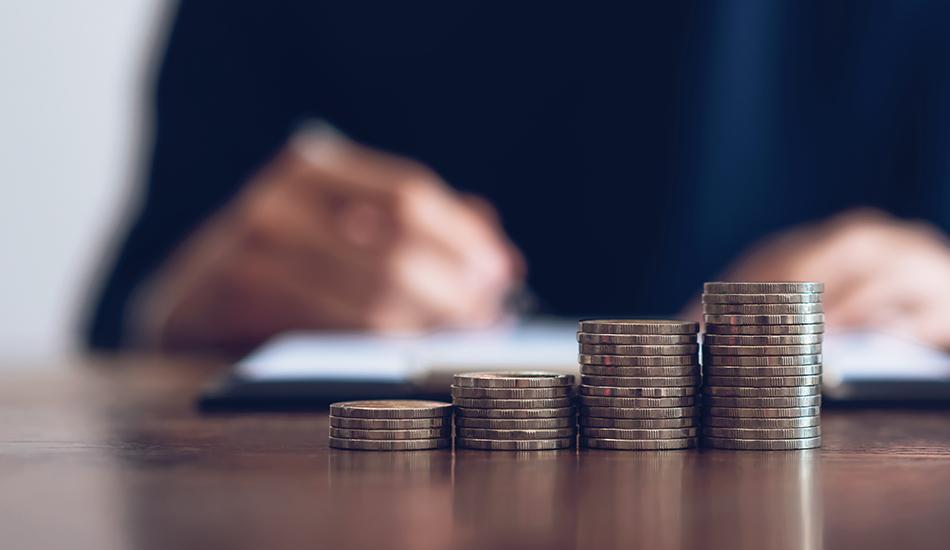
🥊 Writing vs YouTube
This is where writing and YouTube differ quite a lot, when it comes to making money online.
YouTube gives you built-in revenue from AdSense (the adverts you see before the video). And once you hit 10-20k subs, brands (like Skillshare, Brilliant, Squarespace etc) will reach out to you with sponsorship offers.
But writing is a little trickier as there’s no built-in advertising, and putting up paywalls for people to read your writing (eg paid Substack newsletter) will likely kill your growth in the early days unless you’re very good and put out a lot of free value on social media.
🍀 Diversify Your Revenue
Ideally, you want to diversify your income as much as possible as a creator. This makes you less vulnerable to fluctuating trends, platforms changing their monetisation policies, or even you getting bored of one content type.
Here are my six main sources of income as a YouTuber:
🎬 1. YouTube Partner Program (YPP)
Once you get 4,000 public watch hours (in the last 12 months) and at least 1000 subscribers, you become eligible for the YouTube Partner Program. You can start showing ads on your videos, and getting automatic monetisation via Google AdSense. So YouTube will pay you a cut of the money they get from placing adverts before (and during) your videos.
How much money you get depends a lot on your niche. But broadly speaking, YouTube pays about £1-2 ($2) per 1000 views. So it takes a lot of views to make serious money from AdSense, and if you’re getting under 1000 views per video regularly, you’ll only make a few dollars even after several months.
By this point, with 3M+ subs, I make tens of thousands of dollars each month from AdSense, but that’s really a very small % of my income. Almost all big YouTubers will have other sources of revenue.
👯 2. Sponsorships
When you’re wondering how to really make money online as a creator, the answer that often springs to mind is ‘sponsorships’.
Lots of brands want to advertise their products and services to a big audience, especially one that’s likely to be interested in what they’re selling. So you can get paid several thousand dollars for simply shouting out someone’s product in the middle of your video. That’s a lot more than you’ll get from AdSense.
I got my first sponsored video after one year on YouTube, after nearly 150 videos and around 50,000 subscribers. So to start with, getting sponsorship can be a struggle. But if you sign with a creator marketing agency like Standard of Sixteenth, it gets a lot easier, as they negotiate regular deals for you, and get a cut of the earnings.
🔥 3. Affiliates
If you’ve built an audience that knows, likes, and trusts you, you can start affiliate sales. The idea is that you drive customers to buy a product from a company, and you get a cut of the sales. You usually do this by including a unique identifier link in your content (e.g. https://iqunix.store/?ac=ali).
You can start off small by opting in to some affiliate programs like the Amazon affiliate marketing program (use a special link to any Amazon product, and get a cut if people buy). But once you have more recognition you can approach brands directly (who’d be interested in your audience) and get them to give you a cut of any sales you get them.
It's likely that a handful of good affiliates will make you a solid chunk of money. For me, my best affiliates have been Paperlike, the IQUNIX keyboard, Epidemic Sounds, and Readwise.
The average commission rate is around 5-25%, but how much money you make depends on a) how many sales you get and b) how expensive the items are.
⭕️ 4. Community Earnings
Once you’ve built an audience, you can make some decent money by creating a space for your community to hang out with each other and get access to exclusive content.
Patreon is a popular way of doing this. Your audience can pay in a tiered system starting at something like $5/month to get access to a community, do Q&As with you, see behind-the-scenes footage, etc.
You can also create a private community on a self-hosted platform. Ness Labs does this really well with their "community for thoughtful conversation", which has 2000+ paying members, and got up to $9000 in monthly recurring revenue less than 12 months after launching (figures from February 2021).
💻 5. Online Courses
If you have some specific knowledge, you can bundle it up and sell it as a course. There are two main types of course you can make: pre-recorded (film it all before hand and sell it as a bundle), or live cohort-based.
All of my Skillshare courses, for example, are pre-recorded. And that’s pretty simple - plan out your content, get a filming setup for 1-2 days, get your footage edited, and you have a course to upload. You can also self-host pre-recorded courses on your own website.
👕 6. Merchandise
Merch is in many ways the most difficult way of monetising your audience. Because it involves actual physical products, you’ll need to find a manufacturer, design each product, market it, etc. But a lot of creators make it work, including MKBHD who sells $65 hoodies, $16 mugs, notebooks, and a whole load of other goodies.
The only merch I’ve designed and produced myself is my Essentiali line of stationery: notebooks, to-do list, productivity planner. But I’ve also collabed with Dbrand to create the ‘Palettes’ line of custom skins for Apple products.
For more in-depth details about monetisation, check out my article How to Monetise Your YouTube Channel in 2021.

🥳 Give the People What They Want
The great thing about being a creator is that once you’ve built an audience and created enough free content, a few things will happen:
- People will be more willing to buy from you because you’ve built up trust.
- They’ll tell you what they’d like more of (’omg can you please write a complete guide to XYZ?’)
So, one of the most important skills you can develop for monetising your audience is attentive listening.
Pay attention to what you audience says they want or need. Or in many cases, what they say they have problems with. For example, I run a YouTube course, and a lot of my audience still say ‘I don’t know how you’re so confident and comfortable on camera, I wish I could be that calm’. After listening to that feedback, I created a Camera Confidence course for people to learn how to talk to camera. Instead of feeling salesy, it feels like I have an authentic connection to my audience and what they want.
Courses in particular are a great way of monetising your audience as a creator (especially if you can show other people how to make money online themselves). Instead of working 1-1 with a client (eg as a writing consultant) you can scale up your offering and cater to 100’s of people. You can even have unlimited buyers/students in the case of pre-recorded courses – some of my Skillshare courses have tens of thousands of students.
🏁 Conclusion

The key thing is to provide free value to thousands if not millions of people on the internet for a fairly long time. And you’ll know the time is right to start monetising when those people start asking you for a product.
Get started by sharing ideas. Be disciplined and consistent. Learn your craft, and discover what your audience likes. Become an ‘expert’ on your topic, and get people to sign up to your mailing list. Listen to what your core audience would like next, and create those things. Once you have enough momentum and a decent sized audience, you can start making money online by creating a paid product.
Keep your eyes peeled for opportunities, play to your advantages, and have fun!
